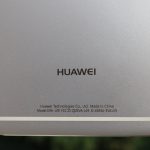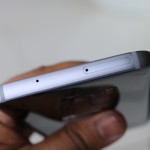Huawei P9 was launched in India a few days back. The latest smartphone from Huawei comes with some interesting new features and hardware improvements, especially the camera partnership with Leica. Huawei and Leica have teamed up to take your smartphone imaging experience to the next level.
The Samsung Galaxy S7, on the other hand, needs no introduction. Samsung’s latest flagship comes with a Quad HD Super AMOLED display, an octa-core Exynos processor, 12 MP dual pixel camera and a much refined TouchWiz UI. It is one the best looking phones that Samsung has made till date, making it one of the hottest phones to buy this year.
In today’s comparison, we pit the Huawei P9 against the Samsung Galaxy S7 to see where these two phones stand against each other.
Huawei P9 vs Samsung Galaxy S7 Specifications
[table id=628 /]
Design & Build
The Huawei P9 is a well built and designed smartphone. Huawei has been improving its designs slowly and the recent Nexus partnership with Google seems to have had some effect on the company’s approach. The P9 comes in two variants – the ceramic white edition and the aluminium edition. The ceramic white edition comes with a ceramic unibody, while the aluminium edition is an all-metal version. We received the ceramic white version.
The Galaxy S7, on the other hand, also shows that Samsung has fine-tuned its design chops to a great extent. Not only has the company been improving its designs over the last two years, but this year, the Galaxy lineup looks extremely good looking. The Galaxy S7 with a metal frame and Gorilla Glass on the front and the back makes the phone look every bit premium that the price claims it to be.
Display
The Huawei P9 features a 5.2 inch IPS-NEO LCD display with full HD ( 1080 x 1920 ) resolution. It comes with a pixel density of ~424 ppi.
The Samsung Galaxy S7 features a 5.1 inch Super AMOLED display with QHD (2560 x 1440) resolution. It comes with a pixel density of ~576 ppi. In terms of protection, the device comes with Corning Gorilla Glass 4.
Hardware and Storage
The Huawei P9 is powered by a 2.5 GHz Octa-core HiSilicon Kirin 955 processor clubbed with Mali-T880 MP4 GPU. The device comes with 3 GB RAM and 32 GB of internal storage. The storage on the device can be further expanded up to 256 GB via microSD card.
The Samsung Galaxy S7 is powered by a 2.3 GHz Octa-core Exynos 8890 processor with 4 x 2.5 GHz Cortex A-72, 4 x 1.8 GHz Cortex A-53 and Mali-T880 MP4 GPU. The device comes with 4 GB RAM and 32 GB of internal storage. The storage on the device can be further expanded up to 200 GB via microSD card.
Camera
The Huawei P9 sports a Dual 12 MP primary camera with f/2.2 aperture, 27 mm, Leica optics, phase detection autofocus, dual-LED (dual tone) flash. The camera can record videos up to 1080p@60fps. On the front, the Huawei P9 comes with a Sony IMX179 8MP camera with f/2.4 aperture. Embedded below are the camera samples from the Huawei P9.
The Samsung Galaxy S7 features a 12 MP primary camera with f/1.7 aperture, 26mm, phase detection autofocus, OIS and LED flash. The camera can record videos up to 2160p@30fps. On the front, the Galaxy S7 comes with an 8 MP secondary camera with f/2.4 aperture. Embedded below are the camera samples from the Samsung Galaxy S7.
Battery
The Huawei P9 comes with a non-removable Li-Ion 3000 mAh battery. Huawei has used a USB Type C reversible connector in the P9, but it still uses the USB 2.0 spec. That being said, the phone does come with fast charging. Huawei claims that the P9 can charge from 0% to 44% in just 30 minutes. In our testing, we found that the P9 can last us through the day on moderate usage. However, heavy users will have to charge it by the end of the day.
Coming to the Galaxy S7, it comes with a non-removable Li-Ion 3000 mAh battery just like the Huawei P9. However, the USB Type C port is missing here. Instead, you get the regular microUSB port. That said, it comes with Fast/Quick Charge 2.0 – you can charge the phone from 0% to 60% in just 30 minutes, which is way faster than the P9. Additionally, you also get Qi/PMA wireless charging. However, just like the P9, the Galaxy S7 may last you through the day on moderate usage, but you will have to charge it by the end of the day if you are a heavy user.
Pricing & Availability
The Huawei P9 has been launched at a price of Rs. 39,999 in India. Huawei is offering two years warranty and three months display replacement option with P9. Huawei P9 customers will also be given free pick and drop service. The phone is available on Flipkart in Titanium Grey, Prestige Gold and Mystic Silver colors.
The Galaxy S7 is currently available at a price of Rs. 43,400 across all retailers – online and offline – in India.
Conclusion
Huawei P9 shows that the company is capable of standing up to its more successful competitors. The partnership with Leica will help the company market it device much better. As far as the actual real world performance is concerned, the P9 is a very good performer that captures very good images. Very good design and build quality also helps the P9.
The Galaxy S7 stands very well even 6 months since its launch. The S7 is one of the best phones to come out from Samsung and if it comes at an attractive price, then it’ll surely be in demand. In the end, it boils down to what you prefer.
























































